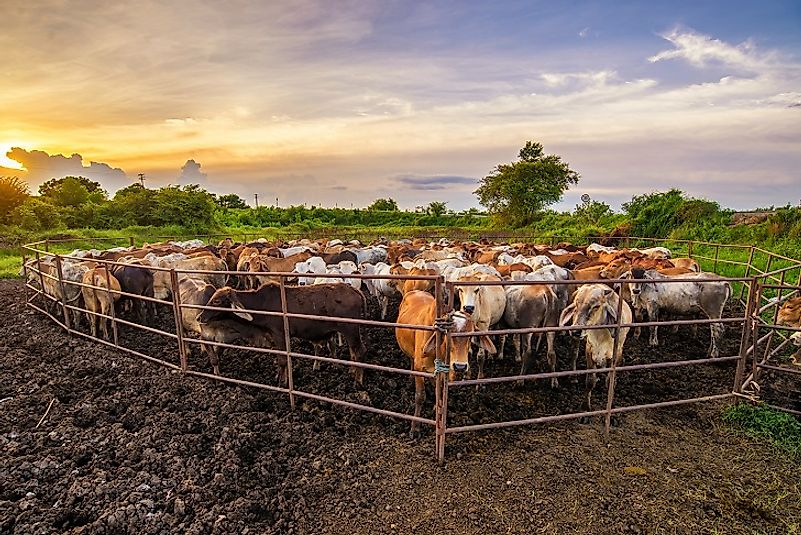Countries With The Highest Methane Emission Contributions From Agriculture

Methane is a chemical compound, which has natural as well as man-made occurrences. Methane gas is used as fuel because of its heavy abundance. It is also a greenhouse gas, which means it has the capacity to hold and emit solar radiation and this is a major reason for global warming. The major emission of methane apart from natural resources comes from agriculture and livestock. In agriculture, most of the fertilizers have methane composition, which later decomposes to evolve methane. The same way, manure or cow dung contributes major portion of methane. Cow dung is also used to manufacture biogas, which is mainly composed of methane.
Reasons for Emissions of Methane from the Agriculture Sextor
According to the World Bank report, agriculture is a major source of methane emission. In its report in 2008, three countries that have maximum methane emission due to agriculture include Solomon Island with 96.80%, Uruguay 92.80% and Namibia 92.00%.
Sources of Methane
Agriculture mostly constitutes of plants, manure, fertilizers, animals, animal waste and rice cultivation. As these countries contribute largely through agriculture, animal raising and laboring therefore these countries contribute largely in methane emission. Agriculture and livestock combining contributes 35% of total methane emission.
Starting from animals such as cow, buffalo, sheep and goat produce methane by digestion as their stomach contains microorganisms that cause enteric fermentation, which releases methane. This methane is emitted through exhalation or by flatus. The animal waste generated is further used as natural manure, which on decomposing emits methane. Most of the synthetic fertilizers are also composed by methane. As the uses of fertilizers have increased alarmingly, the methane generation has also increased.
The agriculture and livestock generate nearly 90 tonnes of methane annually throughout the world. Moreover, the heavy meat production has contributed in the methane emission. Rice cultivation has also contributed in the methane emission as its moisture favorable condition gives birth to microorganisms that enhance the emission of methane by 9%.
On the man-made side, agriculture widely contributes in methane emission. Waste management, burning of residuals and landfill waste is also the reason for emission of methane. Decomposition of waste or cow dung in the manufacturing of manure has also generated methane. Poor agriculture practices in these countries need to be changed with time as they are affecting the global climate due to global warming.
Impact of Emissions of Methane and Solutions
Methane is known as a greenhouse gas, which means it has the capacity to hold radiation from sun. Global warming increases the temperature of earth, which has very worse effect on Earth. Since the last century, the production of methane has increased by 150%, and that has caused the average temperature of Earth to rise by around 1 to 2 degrees Celsius.
The increasing temperature has affected the climate and weather conditions. Melting of glaciers, drought, famine, floods, uneven rainfall, scorching heat, and longer summer seasons are the primary effects of rise in methane emission. Practices like agriculture can’t be abandoned or reduced with the rising population but the method of agriculture and animal raising can be changed, which can bring control in methane emission.
Countries With The Highest Percentage Of Methane Emissions From Agriculture
| Rank | Country | Methane Emissions From Agriculture (% of total) (2008) |
|---|---|---|
| 1 | Solomon Islands | 96.80 |
| 2 | Uruguay | 92.80 |
| 3 | Namibia | 92.00 |
| 4 | New Zealand | 91.00 |
| 5 | Sudan | 87.90 |
| 6 | Mongolia | 87.50 |
| 7 | Timor-Leste | 86.40 |
| 8 | Vanuatu | 85.40 |
| 9 | Mauritania | 83.10 |
| 10 | Chad | 82.90 |











